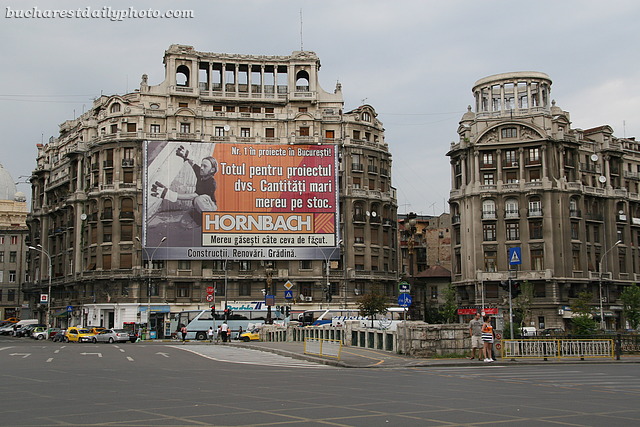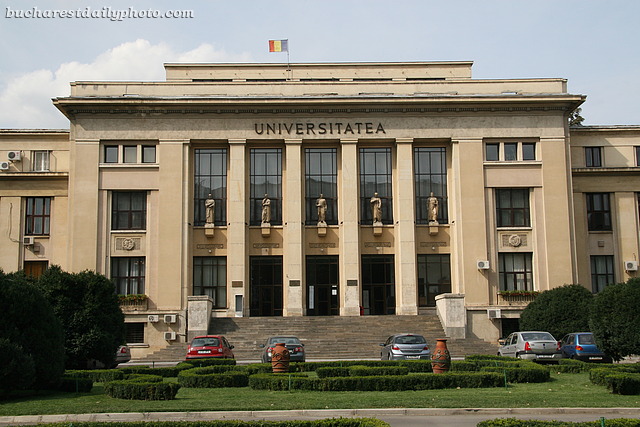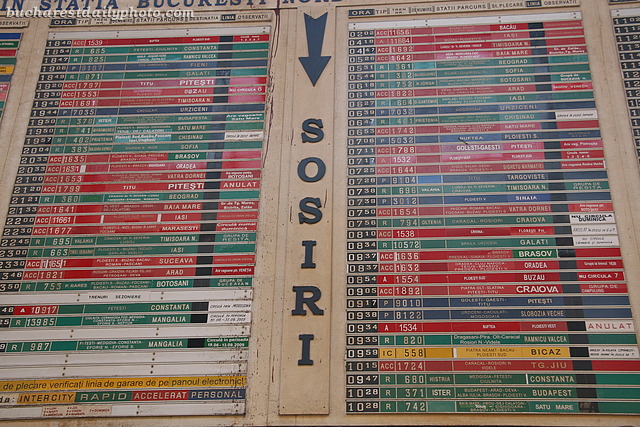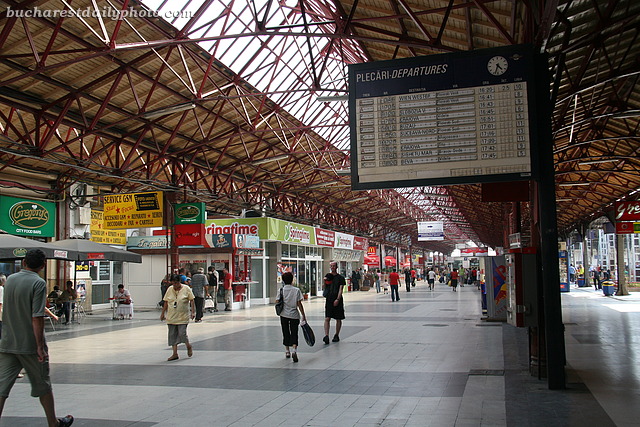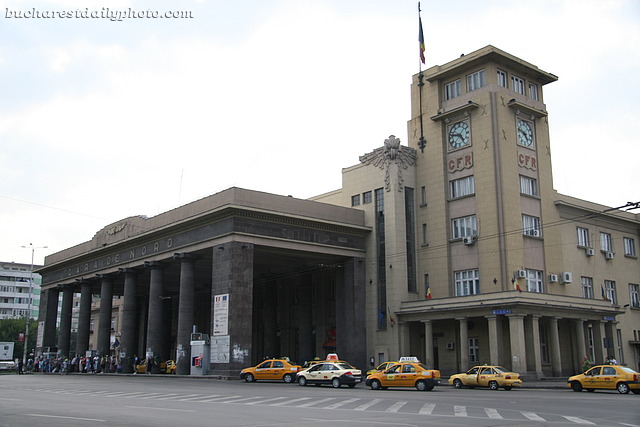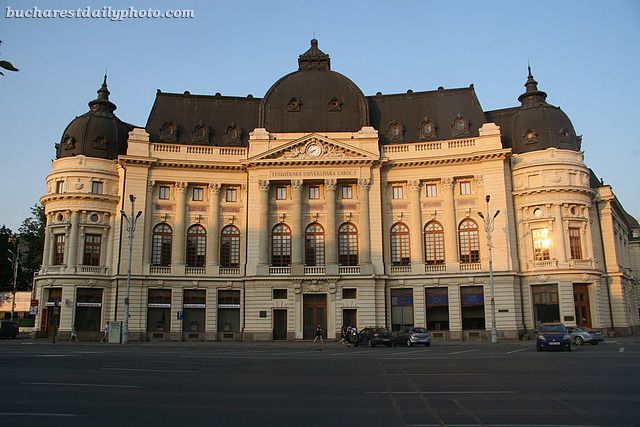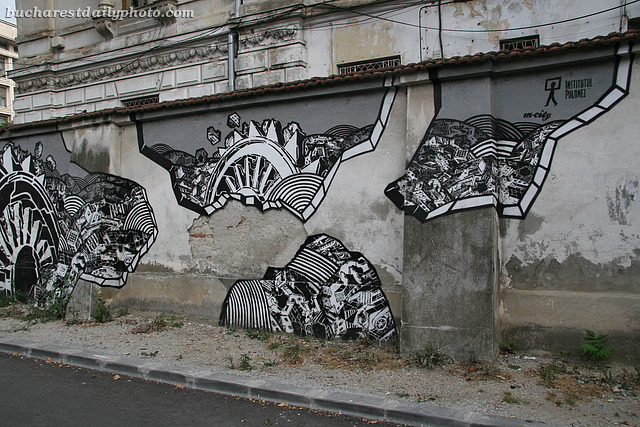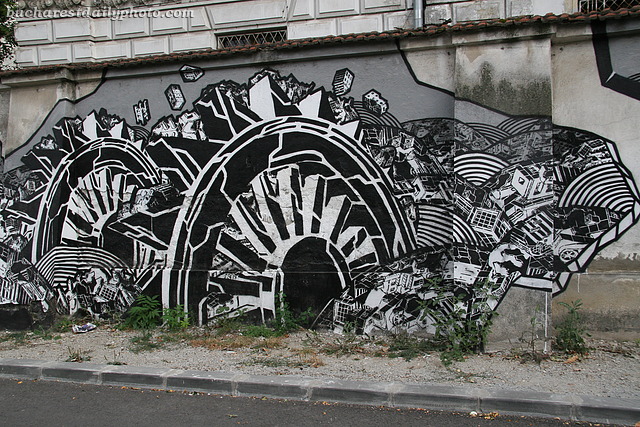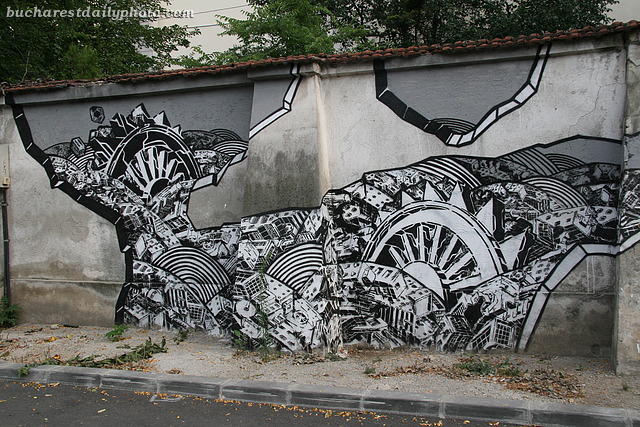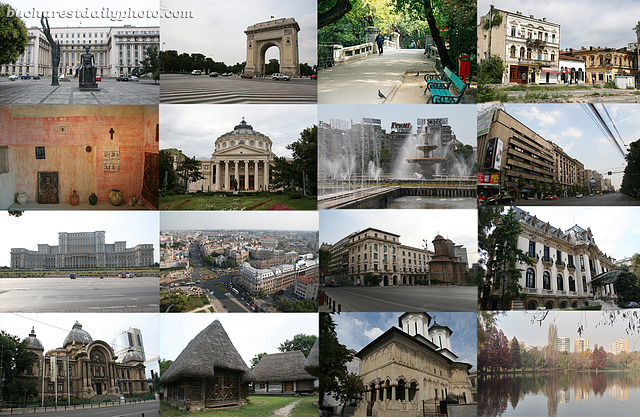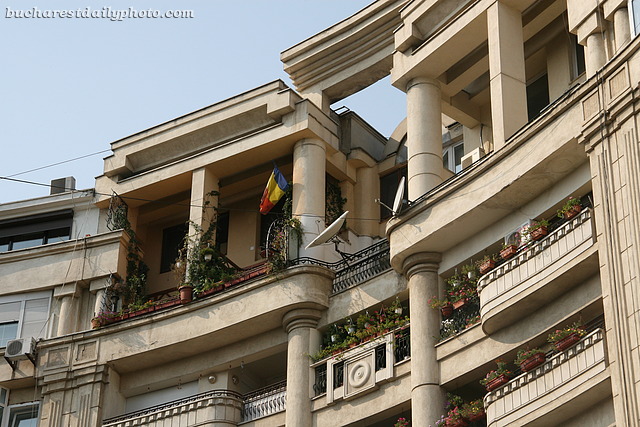Petre Antonescu, the architect who designed the Faculty of Law Building, the subject of yesterday’s photo, also designed these two elegant buildings located at the south end of Victory Road in United Nations Square. They were built between 1928-1930 and served as headquarters for two insurance companies, Adriatica and Agricola Fonciera. Even though the buildings are in need of renovation I think that you can clearly tell that they are real beauties. What sets these apart from other similar structures of that time is the ingenious tops of the buildings.
I don’t even want to get started on the ad because I hope to write a post about these massive pieces of advertising that are plaguing Bucharest. I mean, really, don’t we have enough buildings in Bucharest to display these on, do we have to put them on historical buildings?
